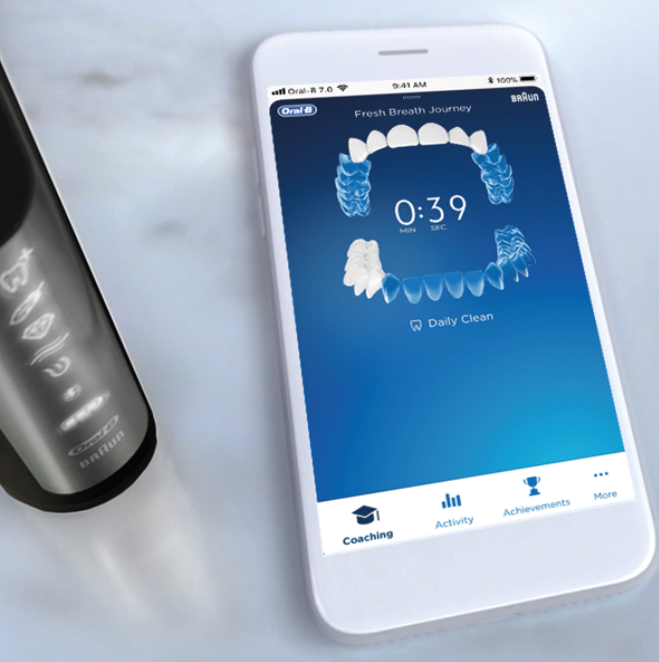Artificial Intelligence: A vision of the future
Imagining a toothbrush that detects wider health issues and connects directly with health professionals
While start-ups attempt to disrupt the way we brush our teeth, the incumbents are betting on evolution rather than revolution. Egle Kiiver, a product development engineer at Procter & Gamble, points to the heritage of its Oral-B brand, founded by the American dentist Dr Robert W. Hutson. In the late 1940s, Hutson began experimenting with different designs – trying to make one soft enough to be gentle on the gums
yet strong enough to effectively clean the teeth.
By 1949, Hutson discovered that using hundreds of thin nylon filaments with rounded ends could achieve the desired results. His invention has been ranked among the most significant developments in oral health of the modern era, since the advent of the bone-handled, ‘hog-bristled’ toothbrushes fashionable in Europe during the late 1700s. “It was the first gingiva-friendly toothbrush,” said Kiiver.
For the past six months, Kiiver has been busy bringing Oral-B’s most advanced toothbrush – the Genius X, that boasts artificial intelligence as a feature – to market; from its unveiling at the Mobile World Congress in Barcelona to talks across Europe, such as a meeting of the Women in AI group in Frankfurt where the spread of artificial intelligence through consumer products was debated.
However, Kiiver said that using AI to understand consumers’ behaviours and needs was not the most important factor in developing the new product; the most crucial remained the insights from dentists and scientists on what can improve oral health. It was from understanding health goals that she and her colleagues could then look at what new technologies were available to meet those, such as AI.
Incorporating two sensors (an accelerometer and a gyroscope) – negating the rather clunky need of its predecessor to be paired with a smartphone camera – and an AI algorithm, the Genius X can determine where the user is brushing and how.
“It is the only brush with AI that gives real-time feedback, showing the user where he or she is brushing, tracking what the user is doing rather than telling the user what to do,” said Kiiver. “The user will get results based on that. That is the advantage of this system; the user can brush like he or she usually does and then can brush the areas that still need more attention [see picture; shown in blue].”
The company’s ambition for future iterations of its product extends beyond oral health. The mouth is the “gateway to health”, it contends, and a toothbrush touches that twice a day. Oral-B’s vision is that humans will live longer and healthier lives through dental care at home; a device that will detect wider health issues and connect directly with dental and health professionals whenever needed.
Currently, its Biometric Health Tracker concept is the company’s idea of a 360-degree health platform, designed to improve oral and overall health. It is not a finished product, the company says; it is a vision that will enable pioneering work between dental professionals, external researchers,
and Oral-B scientists alike.
“This is our vision of the future, the possibility of telling consumers if they have problems in the mouth that might affect their overall health. A change in pH level, for example, would indicate to the user that an imbalance between good and bad bacteria has developed, and the user would be advised to try to eat less sugar and more yogurt. The app would give the user daily tips and observe whether there has been an improvement or not, especially regarding the gingivae, where many problems can present and lead to other diseases.
“This is just a vision, not yet on the market, but data and scientific papers tell us that there is a relation between oral health and general health.
“I see the future as making it easier for everyone to achieve good oral health so that dentists have less restorative work and can focus on preventative care and people have the tools for expert home care.”
The user can brush as normal and then brush the areas that still need more attention

Comments are closed here.